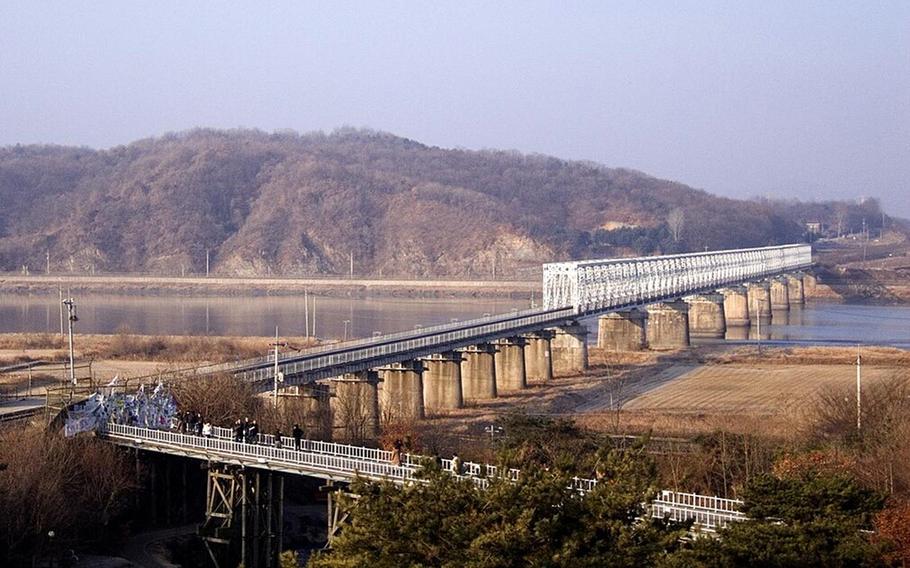
Freedom Bridge, overlooking the Imjin River, is seen from the South Korean side on Jan. 4, 2007. (Wikimedia Commons)
South Korea’s government urged the North to give advance notice if it releases water from its Imjin River dam as the monsoon season approaches the peninsula.
“North Korea’s prior notice of dam discharge is directly related with safety of people’s lives near the border,” Unification Ministry spokeswoman Chang Yoon-jeong said at a news conference Friday in Seoul.
The request is being made “on humanitarian grounds” to prevent flooding and to avoid risking the lives of border-area residents, she added.
Around 63% of the Imjin River, a 160-mile-long body of water that crosses the peninsula, is within North Korea.
Water levels at South Korea’s Pilseung Bridge overlooking the Imjin were around 2.2 feet Monday, Unification Ministry spokesman Koo Byongsam said during a news conference that day. An evacuation of the surrounding area is ordered if water levels reach 3.28 feet.
North Korea last released water from its Hwanggang Dam on the Imjin on July 18 without notice to Seoul, according to the South’s Ministry of Environment. The discharge caused no significant damage, the ministry said at the time.
Six South Koreans were killed in flooding after the North opened the dam in 2009. After that incident, the North signed an agreement to notify the South of its plans to release water.
Despite that agreement, North Korea has notified the South only on three occasions, according to a Unification Ministry news release July 3.
North Korea’s state-run media had yet to respond to the South’s request as of Monday. But the communist regime apparently acknowledged another move by Seoul to lower tensions at the inter-Korean border earlier this month.
After South Korean President Lee Jae-myung on June 11 silenced the military’s propaganda loudspeakers at the heavily fortified border, the North also silenced its speakers later that evening.
Heavy rain lashes the Korean Peninsula during the summer monsoon season. Last year, four South Koreans were killed in separate landslides and residential floods.
At Kunsan city, home of the U.S. Air Force’s Kunsan Air Base, roughly five inches of rain fell in a one-hour span, a national record, the Korea Meteorological Administration reported July 10.
There is a 40% chance this year’s rainfall will be similar to South Korea’s annual average, according to a Feb. 24 report from the meteorological administration. It also predicted a 40% chance of above-average rainfall.